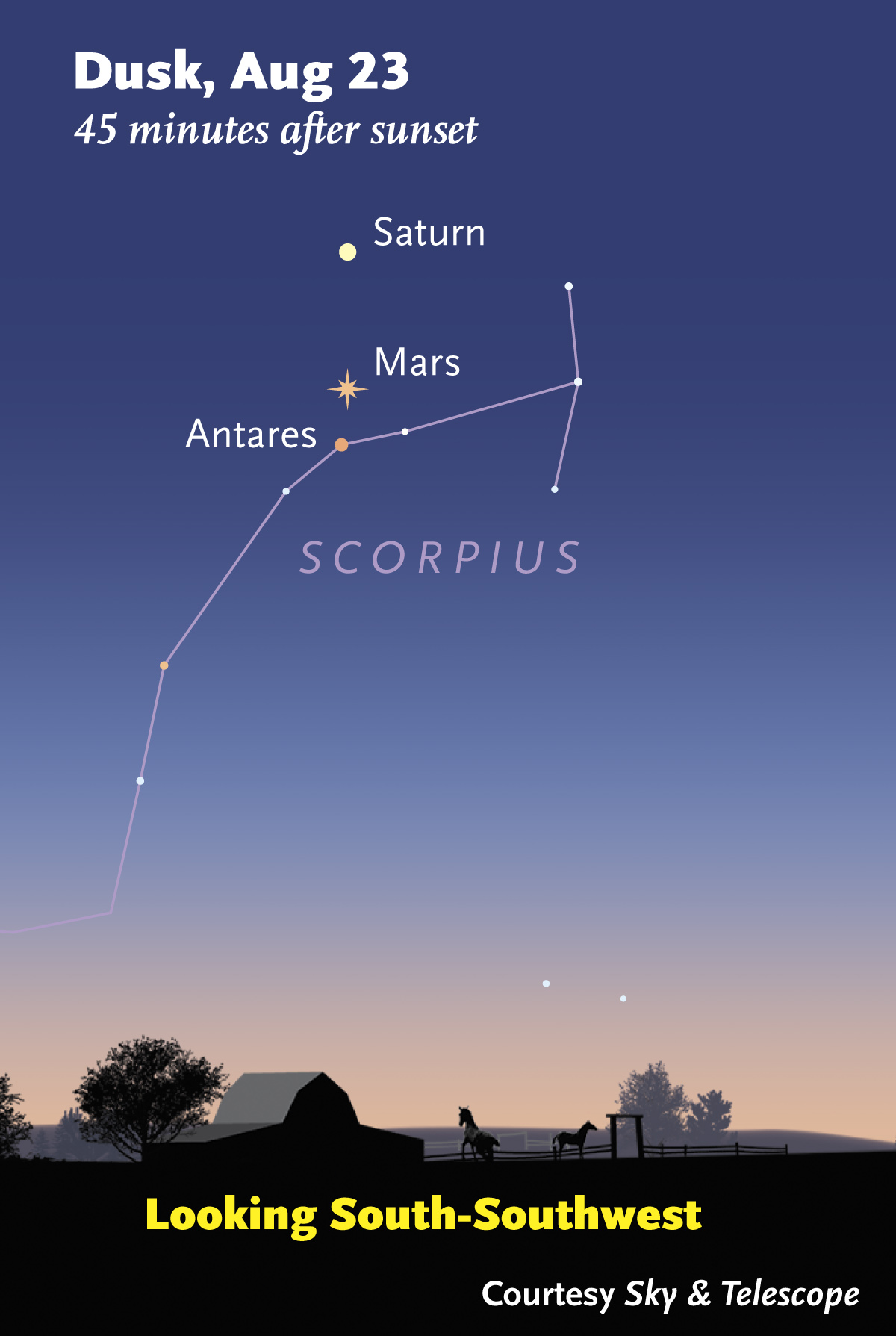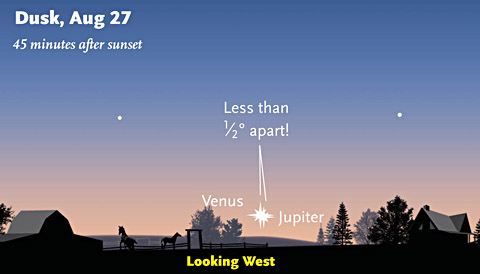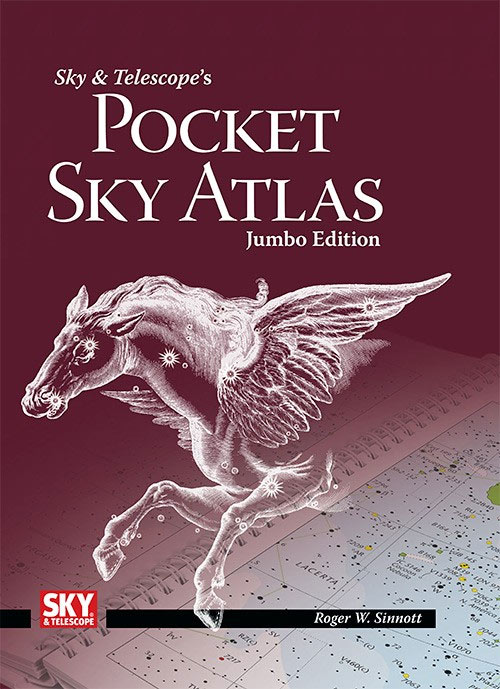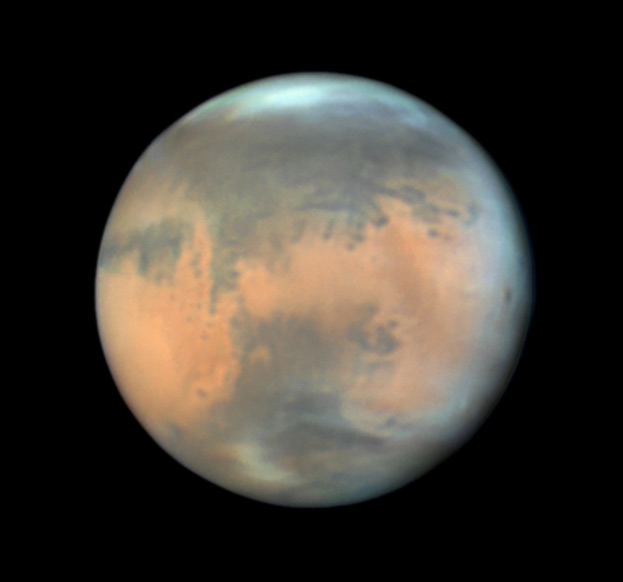Astronomy - This Week’s Sky at a Glance, August 19 – 27

Saturn, Mars, and Antares line up almost vertically on the evening of August 23 and 24, 2016. Have a look! Sky & Telescope diagram.
Friday, August 19
• You can tell that summer is on the decline, temperatures notwithstanding: when darkness falls, Cassiopeia has now risen about as high in the northeast as the Big Dipper has declined in the northwest.
Saturday, August 20
• The waning gibbous Moon rises due east around the end of twilight this evening. Look to its upper left for the Great Square of Pegasus tipped up on one corner — another sign of fall's approach.
Sunday, August 21
• With August nearing its end, you can say hi to the Double Cluster in Perseus without having to stay up late. After dark, find the tilted W of Cassiopeia partway up the northeastern sky. Note the two stars of its lower-left segment (the faint end of the W). Using binoculars, aim at the midpoint between them and then drop down by a little more than the full width of the binocular's view (for typical binoculars). Look for two little irregular cotton puffs, touching each other and tilted diagonally.
With a dark enough sky, you can even make them out with the unaided eye — as a distinct enhancement of the background Milky Way.
Monday, August 22
• Are you following Venus and Jupiter closing in on each other? After sunset today they're 6° apart very low above the horizon due west. Jupiter is to Venus's left or upper left. They're heading toward a close conjunction on August 27th.
Also, use binoculars for a try at faint and fading Mercury, 4° below or lower left of Jupiter.
Tuesday, August 23
• Saturn, Mars, and Antares finally line up. They make a nearly straight, nearly vertical line in the south-southwest as the stars come out, as shown above. Tomorrow the line will be nearly as straight, but with Mars now on the other side of the Saturn-Antares line (at the time of twilight for the Americas).
Wednesday, August 24
• Last chance to catch Saturn, Mars, and Antares in their evening lineup. Think photo opportunity!
• Last-quarter Moon tonight (exact at 11:41 p.m. EDT). The Moon, in Taurus, rises around midnight. By early dawn Thursday morning they're high in the south with Aldebaran to the Moon's left. They're drawing closer hour by hour: see the next entry.
Thursday, August 25
• During the middle of the day today, the last-quarter Moon occults Aldebaran for much of the central and western U.S. Using a telescope under a clean, haze-free blue sky, you may be able to see the orange star wink out on the Moon's bright edge, then reappear from behind the Moon's invisible dark edge up to an hour or more later.
When these events happen depends on where you are. Some times: at Kansas City, the star's disappearance is at 12:56 p.m., and its reappearance is at 1:11 p.m. CDT; atDenver, disappearance 11:43 a.m., reappearance 12:14 p.m. MDT; Los Angeles, disappearance 10:21, reappearance 11:26 a.m. PDT; Berkeley, disappearance 10:17, reappearance 11:15 a.m. PDT; Honolulu,disappearance 5:52, reappearance 7:17 a.m. HAST.
• August is prime Milky Way time. After dark, the Milky Way runs from Sagittarius in the south, up and left across Aquila and through the Summer Triangle very high in the east, and on down through Cassiopeia to Perseus rising low in the north-northeast.
Friday, August 26
• Venus and Jupiter have closed to only 1° apart, very low in the west after sunset. That's less than a finger-width at arm's length. See tomorrow below.

About 20 or 30 minutes after sunset on August 27th, start looking low in the west for a dramatically close pairing of Venus and Jupiter.
Saturday, August 27
• Venus-Jupiter conjunction. Starting about 20 minutes after sunset, look low above the horizon due west (left of where the Sun went down). Bring binoculars. The two planets will be less than ½° apart at the time of twilight for most of the world, and only about 0.1° apart for the longitudes of the Americas. That's so close that you may need binoculars to see that they are two objects, not one!
And you might try for much fainter Mercury 5° to their lower left (for North America). Good luck; Mercury has faded down to magnitude +0.8.
_________________________
Want to become a better astronomer? Learn your way around the constellations! They're the key to locating everything fainter and deeper to hunt with binoculars or a telescope.
This is an outdoor nature hobby. For an easy-to-use constellation guide covering the whole evening sky, use the big monthly map in the center of each issue of Sky & Telescope, the essential guide to astronomy.

The Pocket Sky Atlas plots 30,796 stars to magnitude 7.6 — which may sound like a lot, but it's less than one per square degree on the sky. Also plotted are many hundreds of telescopic galaxies, star clusters, and nebulae. Shown above is the new Jumbo Edition for easier reading in the night. Click image for larger view.
Once you get a telescope, to put it to good use you'll need a detailed, large-scale sky atlas (set of charts). The basic standard is the Pocket Sky Atlas (in either the original or new Jumbo Edition), which shows stars to magnitude 7.6.
Next up is the larger and deeper Sky Atlas 2000.0, plotting stars to magnitude 8.5, nearly three times as many. The next up, once you know your way around, is the even larger Uranometria 2000.0 (stars to magnitude 9.75). And read how to use sky charts with a telescope.
You'll also want a good deep-sky guidebook, such as Sue French's Deep-Sky Wonders collection (which includes its own charts), Sky Atlas 2000.0 Companion by Strong and Sinnott, or the bigger Night Sky Observer's Guide by Kepple and Sanner.
Can a computerized telescope replace charts? Not for beginners, I don't think, and not on mounts and tripods that are less than top-quality mechanically (meaning heavy and expensive). And as Terence Dickinson and Alan Dyer say in their Backyard Astronomer's Guide, "A full appreciation of the universe cannot come without developing the skills to find things in the sky and understanding how the sky works. This knowledge comes only by spending time under the stars with star maps in hand."
This Week's Planet Roundup

Mars as imaged by Damian Peach on June 8th, when it was still a big 18.4 arcseconds in diameter. The dark Sinus Sabaeus - Sinus Meridiani feature intrudes around the left (celestial west; preceding) limb. The bright Chryse region is dead center. The South Polar Cloud Hood is prominent at top, and morning clouds limn the celestial-eastern (following) limb.

Eleven days after Saturn's June 3rd opposition, Damian Peach took this extremely sharp image showing the Encke Gap just inside the edge of the outer A ring, the dusky C ring both against the globe and against the dark-sky background, and a small, dark storm spot in Saturn's high northern latitudes (inside the 5 o'clock position on the rim of the globe). South is up. The rings, practically at their widest open, extend above and below Saturn's poles this season.
Mercury, Venus, and Jupiter are very low in bright twilight. About 20 or 25 minutes after sunset, look for Venus and Jupiter very low to the horizon due west (to the left of where the Sun went down). Venus is the brighter one, lower right of Jupiter. They're 8° apart on August 19th and close in on each other by 1° per day. Mark your calendar for their very close conjunction, barely 0.1° apart for North America, on the evening of Saturday August 27th. Bring binoculars!
Next, try to spot fainter, lower Mercury. It spends the week 4° or 5° below or lower left of Jupiter. You'll probably need those binoculars.
Jupiter is nominally magnitude –1.7, Venus is –3.8, and Mercury fades this week from +0.3 to +0.9. But objects near the horizon appear dimmer than their listed magnitudes due to atmospheric extinction.
Mars (magnitude –0.4, in upper Scorpius) is moving rapidly eastward (leftward) between Saturn (magnitude +0.4) and Antares (+1.0, below Saturn). On August 23rd and 24th they form an almost straight, vertical line, as shown at the top of this page. See our article Two Planet Pairs Perform at Dusk.
Uranus (magnitude 5.8, in Pisces) and Neptune(magnitude 7.8, in Aquarius) are well up by midnight, in the east and southeast respectively. Info and finder charts.
__________________________
All descriptions that relate to your horizon — including the words up, down, right, and left — are written for the world's mid-northern latitudes. Descriptions that also depend on longitude (mainly Moon positions) are for North America.
Eastern Daylight Time (EDT) is Universal Time (UT, UTC, or GMT) minus 4 hours.
__________________________
"I do not know what I may appear to the world; but to myself I seem to have been only like a boy playing on the seashore, and diverting myself in now and then finding a smoother pebble or a prettier shell than ordinary, whilst the great ocean of truth lay all undiscovered before me."
— Isaac Newton, 1642–1727
(From the Memoirs of the Life, Writings, and Discoveries of Sir Isaac Newton, David Brewster, 1855)
— Isaac Newton, 1642–1727
(From the Memoirs of the Life, Writings, and Discoveries of Sir Isaac Newton, David Brewster, 1855)
No comments:
Post a Comment